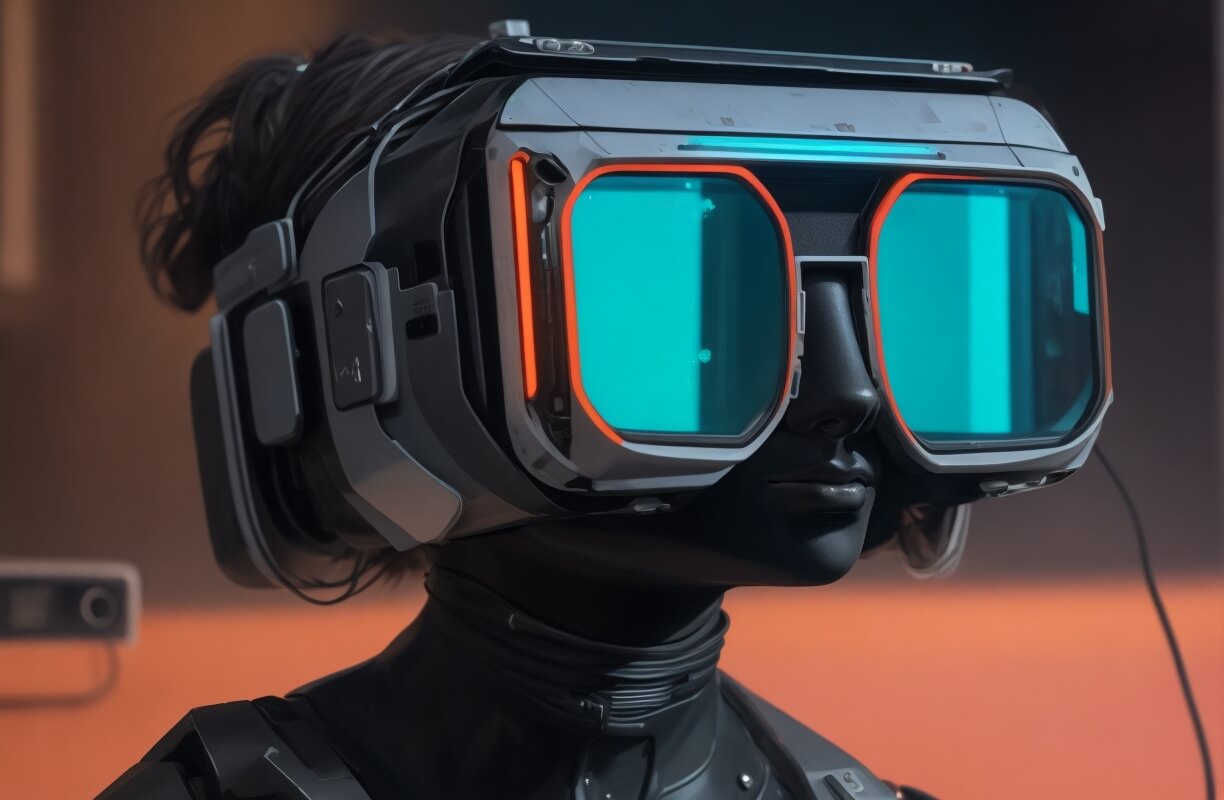Redefining Cinema: The Transformative Power of Digital Innovation

In an era dominated by ceaseless technological advancements, the traditional cinematic landscape is undergoing a seismic shift. The established concept of what constitutes a "movie" is being challenged, reformatted, and expanded through digital transformation. Streaming services, Virtual Reality (VR), Augmented Reality (AR), and other digital media forms are not only enhancing cinematic experiences but also demanding a reevaluation and redefinition of cinema art.
Unveiling New Cinematic Realities: VR and AR
The integration of VR and AR technologies in cinema breaks down the barriers between reality and the digital world, providing a groundbreaking, immersive experience that extends far beyond conventional screen-viewing.
Take "Carne y Arena" (2017) by the acclaimed filmmaker Alejandro G. Iñárritu, for instance. This virtual reality installation enables participants to traverse through the harrowing journey of refugees and migrants. Viewers are not just spectators but become part of the narrative, blurring the lines between observer and participant, and challenging the conventional structure and perception of a ‘movie’.
In the epoch where streaming platforms like Netflix, Amazon Prime, and Disney+ hold significant market share, the distinguishing lines between home-viewing and theatrical experiences have dwindled. One potent example of this is Martin Scorsese’s “The Irishman” (2019). A cinematic spectacle, it was primarily released on Netflix, with limited theatrical screenings. It raised pertinent questions: Can a film primarily distributed on a streaming service hold the same cinematic merit and cultural significance as one released in theatres?
Blurring Boundaries: When Films Meet Video Games
The gaming world is another digital frontier exploring narrative storytelling, sometimes paralleling, and even surpassing traditional films in terms of plot complexity and emotional depth. Games like "The Last of Us" (2013) demonstrate how interactive digital media can create emotionally resonant, narrative-driven experiences. This raises the question: Can such interactive experiences be considered a form of cinema?
The intricate intersection between cinema and video games presents a spectrum where narrative storytelling and interactive user engagement harmoniously converge. No discussion about this amalgamation is complete without acknowledging "Black Mirror: Bandersnatch" (2018), a groundbreaking creation from Charlie Brooker.
"Bandersnatch," released on Netflix, presented a unique storytelling format to the masses — an interactive film where viewers dictate the trajectory of the protagonist, Stefan. Audiences make choices for him, affecting the storyline and consequently, the ending. A dazzling mix of cinematic storytelling and user interactivity, typically attributed to video games, "Bandersnatch" elevated the digital cinema experience by relinquishing control to the viewer. It was a film, yet it was a game. It shrouded itself in a beautiful mystery of genres and formats, thus, forming a genre-defying entity that opened a Pandora's box of possibilities for filmmakers and game developers alike.
A myriad of story paths, choices, and potential endings offered a novel cinematic journey that had not been mainstream until that moment. It shook the foundational storytelling structure, steering away from the linear narrative to which audiences were accustomed. Society received it with a mix of awe, excitement, and philosophical contemplation. It nudged viewers to wrestle with existential questions while being immersed in an interactive entertainment experience, rekindling debates regarding free will and predetermined destiny.
Conversely, video games have been progressively encroaching upon the terrain once solely occupied by films, offering stories that are not only deeply engaging and emotionally charged but also embedded with complex narratives and character arcs. Take, for instance, Quantic Dream’s "Detroit: Become Human" (2018), which immerses players in a dystopian future, navigating through intricate narratives and moral choices, forcing them to grapple with issues of civil rights, humanity, and artificial intelligence. The game has been widely praised for its narrative depth, becoming a testament to the storytelling power of interactive media, embodying cinematic qualities in a gaming format.
These innovations signify a shift in our cultural and entertainment paradigms. Not only do they enrich the viewer's/player's experience, but they also bring forth a new realm where filmmakers and game developers can explore uncharted territories of storytelling and user engagement. In these interactive experiences, every choice matters, and each decision shapes the story, making the audience an active participant rather than a passive consumer.
Democratising Content Creation: Digital Technology Empowerment
Digital platforms and technology have democratized content creation and distribution, enabling independent filmmakers and creators to showcase their work without being tethered to traditional distribution models. Platforms like YouTube have witnessed the surge of short films, web series, and various content that challenge, and often break, traditional filmmaking norms.
Take Issa Rae, who transitioned from her web series "The Misadventures of Awkward Black Girl" (2011) on YouTube to mainstream success with HBO’s "Insecure" (2016-2021). Her journey exemplifies how digital platforms can serve as potent spaces for cultivating unique, diverse storytelling outside conventional cinema. These digital explorations in the cinematic realm have been met with varying degrees of acceptance and skepticism. While many celebrate the democratization and novel experiences offered by digital platforms, purists argue that these shifts detract from the traditional cinematic experience.
"The Irishman" was met with critical acclaim but sparked debates about whether films primarily released on streaming platforms should contend for awards traditionally reserved for theatrical releases, like the Oscars. Meanwhile, experiences like "Carne y Arena" bring to light the emotive power and immersive capacities of VR, yet discussions persist regarding whether such experiences should be categorized alongside traditional films.
A Future Unfolding
As we stand on the precipice of these shifting cinematic terrains, we are left to ponder: How will our definitions and understandings of what constitutes a 'movie' evolve in the coming years? The blurring boundaries between traditional cinema, digital platforms, and interactive media forecast an enthralling future where creators can weave narratives across a rich tapestry of platforms and formats.
The transformations urging redefinition in the cinematic domain foster a multi-faceted exploration of storytelling, carving out spaces for new voices, experiences, and narratives to flourish, and in doing so, perhaps redefining what we understand as 'cinema' in the digital age.